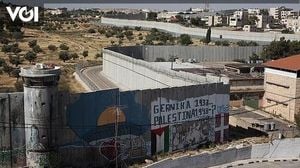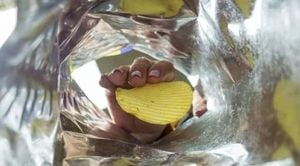As crowds surge through the vibrant streets of west London this weekend, the Notting Hill Carnival—Europe’s largest street party—ushers in a new era of policing. For the first time, the British Transport Police (BTP) are deploying a dedicated drone team to help keep an estimated two million revelers safe, a move that’s both groundbreaking and controversial, according to reports from BBC and the Daily Mail.
The decision, announced on August 23, 2025, comes amid mounting concerns about crowd safety and violent incidents at past carnivals. Just last year, tragedy struck when Cher Maximen, a 32-year-old mother, was fatally stabbed in front of her three-year-old daughter on the event’s family day. The attack, which happened in plain sight of police officers, sent shockwaves through the community and reignited debates about whether the Carnival, in its current format, can truly be managed safely. Her cousin, Lawrence Hoo, spoke to Sky News, warning, “She was in the safest location possible on family day with her daughter and she was murdered directly in front of police officers, so if it can happen there, it can happen anywhere. In all honesty, it’s an unmanageable event.”
In response to such fears, this year’s Carnival will see a staggering 7,000 officers and staff on site, as organizers and law enforcement agencies pull out all the stops to prevent a repeat of past violence. The BTP’s new drone team is at the forefront of these efforts. These drones aren’t your average hobbyist gadgets—they’re equipped with four cameras, including a wide angle and a zoom lens that can identify a person from up to 80 meters (about 260 feet) away. “We have a thermal imaging camera,” explained Inspector Chris Fells, the drone operations manager, to BBC. “If someone is hiding in places that are difficult to see or it’s at night we can still locate those people.”
But that’s not all. The drones also boast a laser rangefinder, allowing them to tag objects over a kilometer away and provide precise GPS coordinates to responders. This means that if something goes wrong, officers can be directed straight to the scene in real time. Images captured by the drones can be streamed instantly to officers on the ground or to the control room, providing a bird’s-eye view of the sprawling festival and helping authorities respond rapidly to incidents.
Superintendent Dominique Ioannou of the BTP highlighted the importance of integrating the drone feeds with the extensive network of CCTV cameras already in place. “It’s a challenge but the network we’ve got of extensive cameras plugged into our CCTV hub are critical in making sure that we can keep an eye on things and make sure that everyone’s safe,” she said. “Generally we’ve got exceptional quality cameras that are really good for us in terms of identifying people and bringing offenders to justice.”
Crowd safety has been a top priority this year. Following last year’s tragic events, the Metropolitan Police warned that the biggest risk at Carnival was a mass casualty crowd crush—a nightmare scenario given the sheer volume of people packed into a relatively small residential area. Commander Charmain Brenyah told the BBC, “Crowd safety remains a significant concern in Carnival. A lot has been done this year to address that.”
Among the new measures: expanded crowd management teams, extra cameras, and more information screens to keep attendees informed and moving safely. Medical teams from St John Ambulance, who have conducted rigorous simulation exercises in close coordination with the police, will be patrolling on foot and bicycle, ready to respond to emergencies. “We do lots of simulation exercises to prepare and we work very closely with the police,” said Peter Hollely-Robins of St John Ambulance.
Technology is playing an ever-larger role in the safety net. For 2025, live facial recognition cameras will be in use—another first for the Carnival. Organizers say these cameras, along with screening arches at the busiest entry points to detect weapons, are vital for deterring and apprehending those who might pose a threat. The Metropolitan Police have already arrested 100 people and seized dozens of weapons in the lead-up to the event, as part of a broad operation targeting those considered the greatest risk to public safety.
Yet, the embrace of facial recognition technology hasn’t come without controversy. Civil rights groups—11 of them, according to the Daily Mail—have criticized the technology, citing studies that show it is less accurate for women and people of color, potentially leading to racial bias. They’ve called for its use to be dropped, arguing that it risks unfairly targeting minority groups. The Met, however, stands by its decision. Commissioner Sir Mark Rowley defended the move, stating that while only a minority of Carnival-goers “have used the event to commit serious crimes,” the technology has already aided in more than 1,000 arrests for serious offenses.
Matthew Phillip, chief executive of Notting Hill Carnival Ltd, is adamant that the event remains a safe and positive celebration, despite the challenges. “We’ve put a lot of measures in place, as we always do, but even more so this year, to keep people safe. Carnival is a safe space, it’s no more unsafe than the rest of London. So I would say come and be respectful,” he told the Daily Mail. He also highlighted the expanded crowd management efforts, extra cameras, and new information screens as part of a comprehensive approach to safety.
Local officials echo this focus on balance—ensuring the Carnival retains its joyful spirit while keeping risks in check. Marina Ahmad, chair of the London Assembly’s Police and Crime Committee, summed up the city’s priorities: “The priority at the ‘massive’ event was ‘for people to have a good time while being safe as possible.’”
For those traveling to the Carnival, Transport for London (TfL) has issued warnings and advice. Nearly all Tube stations in the area will be affected by closures or changes, and bus diversions are in place. Carl Eddleston of TfL recommends that partygoers plan ahead: “Some of the bigger stations like Paddington are about a 15-minute walk away and probably better places to go too, because they are obviously built and designed for big crowds.” TfL’s dedicated website offers up-to-date travel information to help attendees navigate the disruptions.
As the Carnival gets underway, the city watches closely. The deployment of drones, facial recognition technology, and an army of officers and medics marks a new chapter in the ongoing effort to balance celebration and safety. Whether these measures will be enough to prevent tragedy and ensure a smooth event remains to be seen—but for now, London is pulling out all the stops to make sure the Notting Hill Carnival can continue as a joyous, safe gathering for all.




